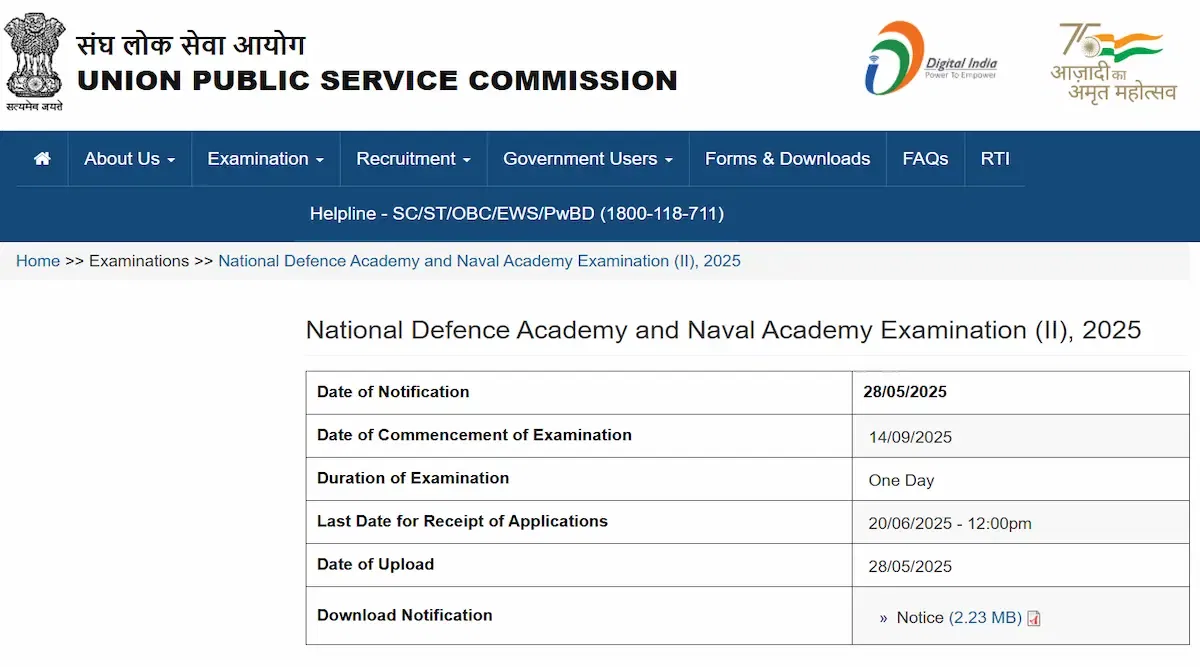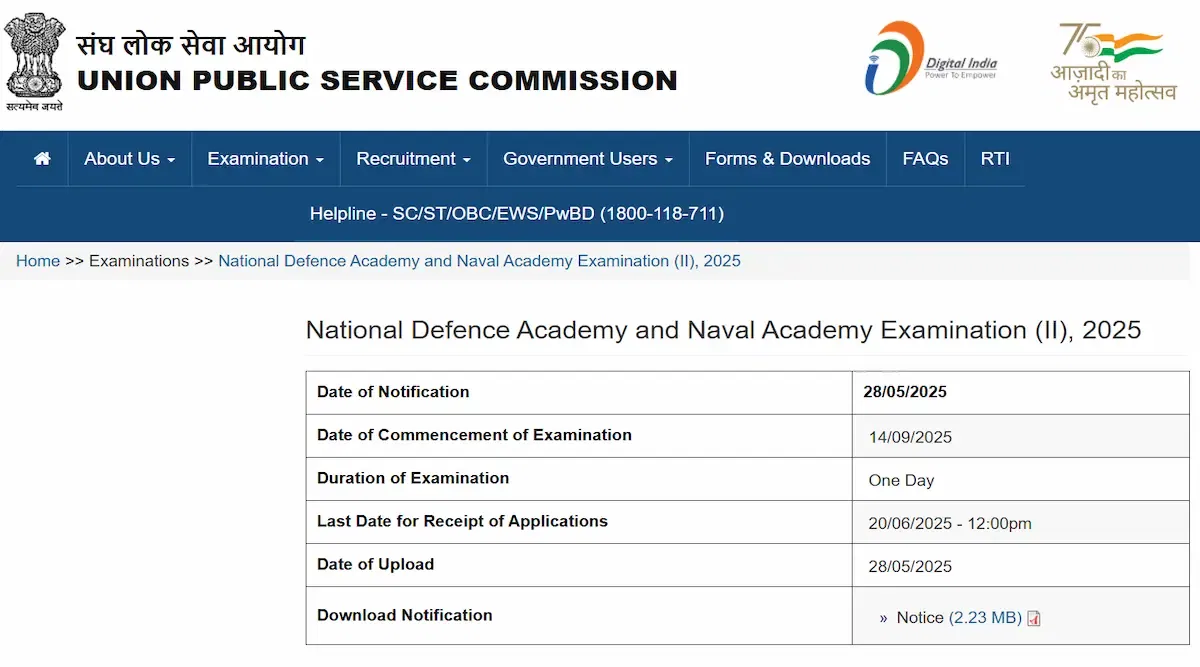
Table of Contents
UPSC NDA Syllabus 2025 is designed by the Union Public Service Commission depending on the requirement of the job post. The candidates can find the official NDA syllabus on the official website upsc.gov.in. The UPSC NDA 2025 examination will be conducted in two phases, where Paper 1 consists of Mathematics and Paper 2 consists of General Ability. Questions asked in the NDA exam will be picked from NCERT books mostly and are of the level of Class 9-12th standard.
Aspirants must ensure that they plan and prepare adequately to crack the UPSC NDA 2025 exam. Candidates can also download the official syllabus in the PDF format mentioned in the article. The UPSC NDA 1 2025 Exam is scheduled to be held on Apr 13, 2025. Applicants are advised to go through the UPSC NDA syllabus and exam pattern provided in the sections below.
UPSC NDA Exam Syllabus
The NDA 2025 exam will be conducted in two phases. For a better result, preparation of the syllabus is of utmost importance. The syllabus for NDA exam is divided into two parts - Mathematics and General Ability. Important topics from each part are given below. The UPSC NDA Exam Pattern 2025 will summarize the marking scheme and negative marking included in the paper.
UPSC NDA Mathematics Syllabus
The topics included in the UPSC NDA exam are as follows:
| Topic Name | Detailed Particulars |
| Algebra |
|
| Matrices and Determinants |
|
| Trigonometry |
|
| Analytical Geometry of 2 and 3 Dimensions |
|
| Differential Calculus |
|
| Integral and Differential Calculus |
|
| Vector Algebra |
|
| Statistics and Probability |
|
NDA General Ability Syllabus
The syllabus of NDA General Ability is given below:
- The question paper on General Knowledge will broadly cover the subjects - Physics, Chemistry, General Science, Social Studies, Geography, and Current Events.
- The syllabus given below is designed to indicate the scope of these subjects included in this paper.
- The topics mentioned are not to be regarded as exhaustive and questions on topics of similar nature not specifically mentioned in the syllabus may also be asked.
- The candidate’s answers are expected to show their knowledge and intelligent understanding of the subject.
| Topics | Detailed Particulars |
| Section A: Physics |
|
| Section B: Chemistry |
|
| Section C: General Science |
|
| Section D: History, Freedom Movement and the like |
|
| Section E: Geography |
|
| Section F: Current Events |
|
SSB Interview Syllabus (Stage II)
Only those candidates who clear SSB Interview Stage I are permitted to appear for Stage II. The details are as follows:
-
Part I comprises Officer Intelligence Rating (OIR) tests and the Picture Perception & Description Test (PP&DT). The candidates will be shortlisted based on the combination of their performance in their OIR Test and their PP&DT.
-
Part II Comprises of Interview, Group Testing Officer Tasks, Psychology Tests, and the Conference. These tests are conducted over 4 days.
UPSC NDA Syllabus PDF Links
The PDF links for all the subjects the candidates will be tested on during the UPSC NDA 2025 examination have been tabulated below.
| Subject | Link |
| Mathematics | Click Here |
| General Ability | Click Here |
Applicants are advised to go through the UPSC NDA syllabus 2025 in detail and prepare accordingly.















